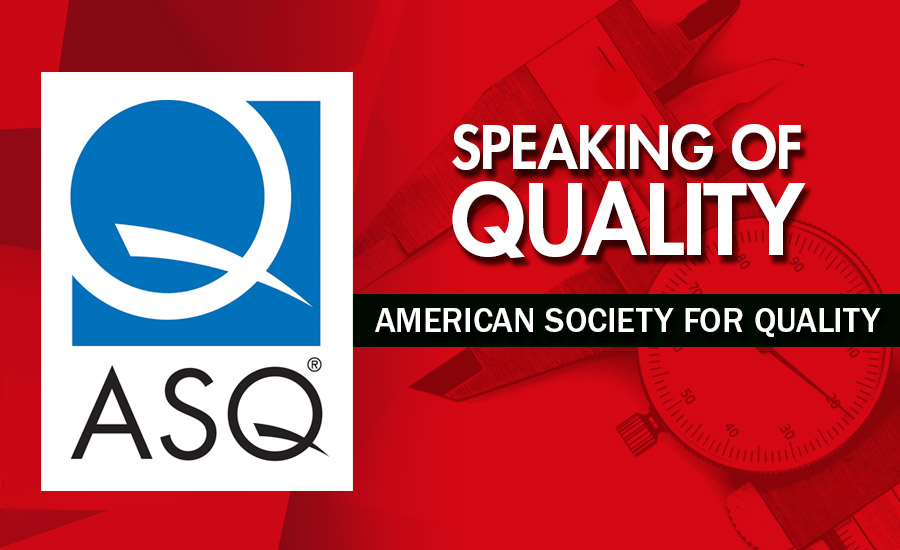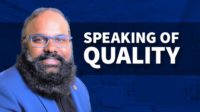Our natural human tendency is: If it ain’t broke, why fix it!
However, as quality professionals, we know change is inevitable: things will change, we help make the changes. With 2021 zooming by, we have already adapted activities to face these changes. Many of us have already mitigated deficiencies found in our change control process.
As an example of management system change, the document and drawing process includes assessments of changes before implementation to ensure the extent of the change, the impact, and the consequences are known.
Another change example is where an unexpected incident creates a process upset during a key production activity, where the situation needs to be mitigated. In the course of evaluating operational hazards, these instances would have been mitigated in our process risk assessments, with developed action plans containing specific steps to take, which would be improved by periodic drills, and the continuous feedback loop to ensure we are better prepared for change when and if the situation occurs¹.
Our Attitude Towards Change
A number of years ago Jim Collins, Stanford University School of Business, published “Built to Last.” The intent was to analyze and demonstrate how great organizations sustain and manage change over time. In analyzing the data, Collins and his team came up with the idea that there were certain universal characteristics of truly great organizations.² Collins’ follow-up was “Good to Great,” one of the best-selling business books of all time. The book provides insight into the intrinsic attitude and habit great companies employ to sustain greatness and explains these behaviors for leaders to emulate.
What is particularly interesting for the quality professional is that Collins indicated that leaders in these good to great organizations are cut from the same cloth, which he termed Level 5 leaders. Collins wrote, “Level 5 leaders are a study in duality: modest and willful, humble, and fearless.” Collins indicated that they were “seemingly ordinary people quietly producing extraordinary results.”³ Collins and his team observed that a Level 5 leader builds enduring greatness through the paradoxical blend of personal humility and professional will. Essentially, a Level 5 leader lives out Life’s Greatest Paradox which positions them to be adaptable to change. Tim Keller made a similar observation when he stated, “The humble are kind and gentle, but also brave and fearless. If you are to be humble, you cannot have one without the other.”⁴
The point alluded to here is that change can come at any time, whether we are prepared or not, from likely as well as unlikely places. Our attitude of humility can help us be prepared for the times when they come. Collins and his team found that the strongest are the humblest. When personal changes come we want to be in a position to have the inner strength and fortitude that we will make the right decisions, take the right steps, and not be consumed by people pleasing and impressing our colleagues.
Key Tools For Handling Change
A key tool that has proven useful in handling change is the SWOT (Strength, Weakness, Opportunity, and Threats) Analysis as this can help when faced with a difficult scenario⁵. A change may begin as a threat and become an opportunity for an improvement. An identified weakness may present the opportunity to leverage a partner.
- Strengths: Identify the advantages that your scenario has over others.
- Weaknesses: Be honest about the weaknesses in your actions.
- Opportunities: Identify the trends that you can take advantage of.
- Threats: Assess the conditions that may be obstacles and have a negative impact on actions
Another key is the PESTLE (Political, Economic, Social, Technology, Legal, Environment) Analysis which is used to analyze the external factors to evaluate the pros and cons of major decisions.⁶
- Political: Determine how the current direction of the political changes may influence business development and growth.
- Economic: Examine the effects of interest rates, taxes, the stock market changes, consumer confidence and other economic metrics.
- Social: Acknowledge the changes in lifestyles, advertising targets, ethics, demographics, social media, and culture.
- Technology: Evaluate your organizations’ current technology and gaps.
- Legal: Anticipate any new laws and regulations that can impact your operations.
- Environment: Identify the environmental factors that should be considered.
Using the two analyses together:
- Brings together various skills with a common goal
- Identifies potential threats to the organization and helps to reduce the impact.
- Encourages persons to adopt a strategic thinking mindset.
- Creates a method to find and exploit new opportunities.
- Evaluates the impact of various decisions before implementation.
SWOT and PESTLE analyses evaluate the pros and cons of decisions. They may be applied to large or small activities such as reorganizations, production changes, marketing campaigns, and new product launches. The analysis process is intended to bring together the views of colleagues and personnel and can result in a better understanding, acceptance, and successful implementation of change.
The best way to approach change is together.
References:
¹ Johnson, L. M. (1974). Quality Assurance Program Evaluation - The Key to Quality. Santa Fe Springs: Stockton Trade Press.
² Simmons, R. (2011). The True Measure: How Perceptions of Success, Achievement & Recognition Fail Us in Difficult Times. Mobile, Evergreen Press.
³ Collins, J. (2001). Good to Great: Why some companies Make the Leap and Others Don’t. New York: HarperCollins Publishers.
⁴ Keller, T. ((2004/09/26). The Wellspring of Wisdom. Gospel In Life. Retrieved from https://www.gospelinlife.com/
⁵ Scott, S. S. (2019/10/01). Retrieved from DevelopingGoodHabits.com: https://www.developgoodhabits.com/personal-swot-analysis/
⁶ Woodruff, J. (2019/01/19). Retrieved from Chron.com: https://smallbusiness.chron.com/effective-business-implementation-techniques-46632.html



